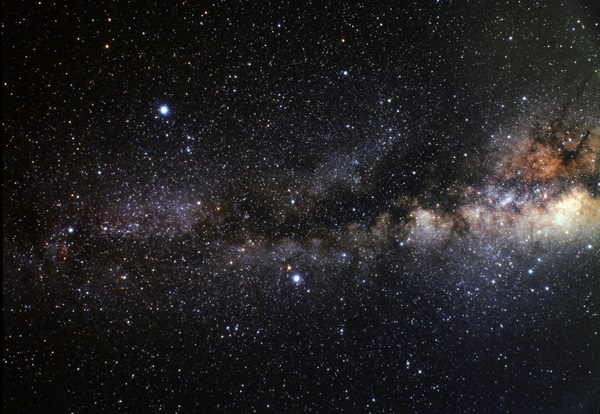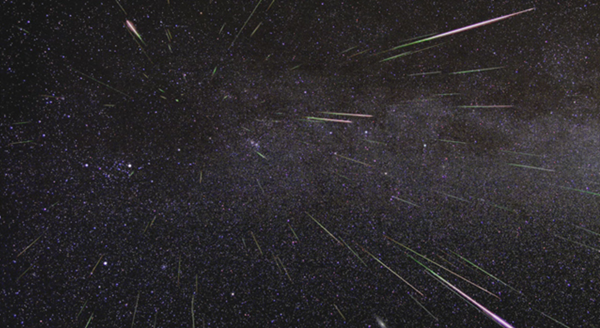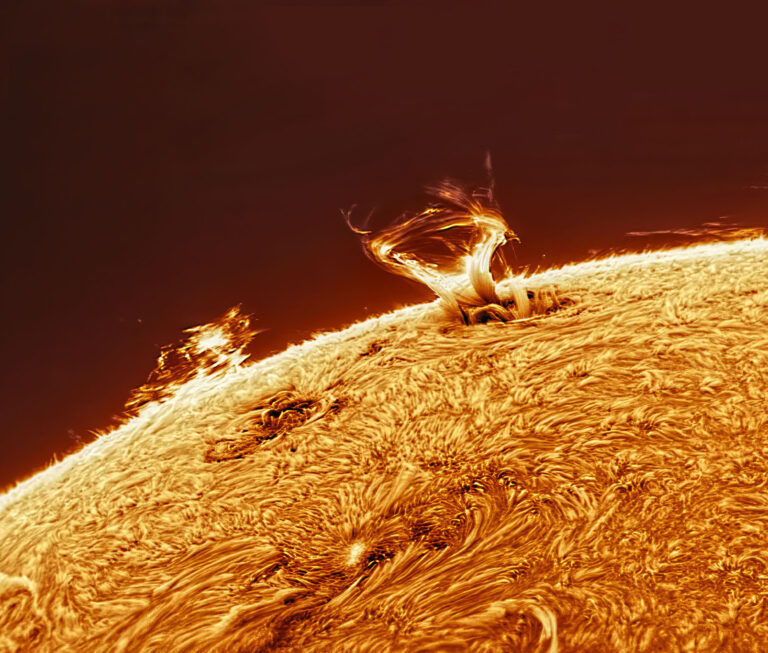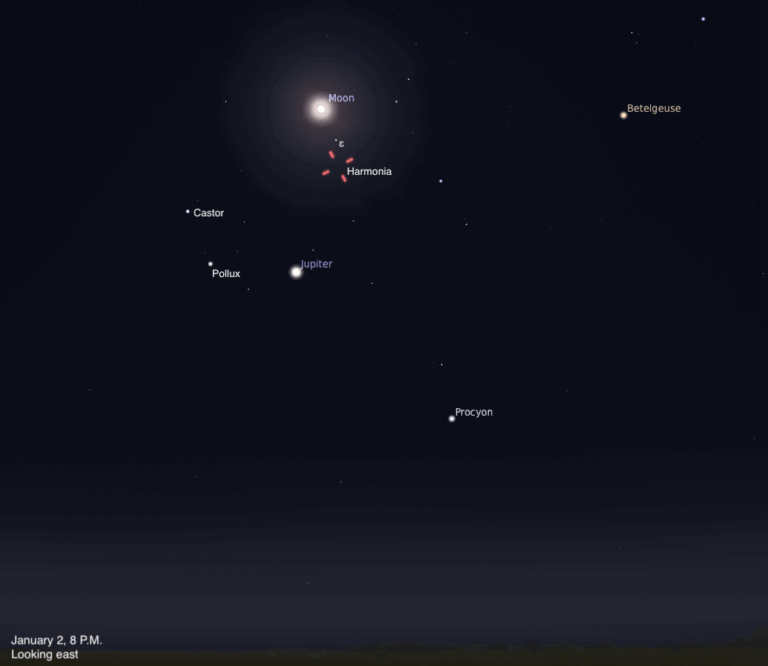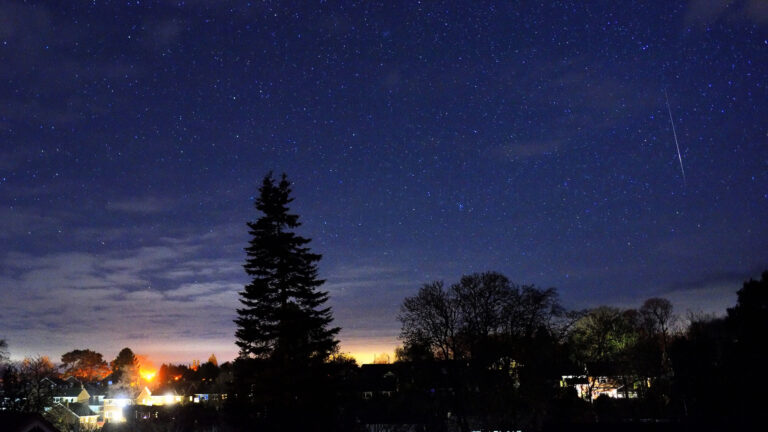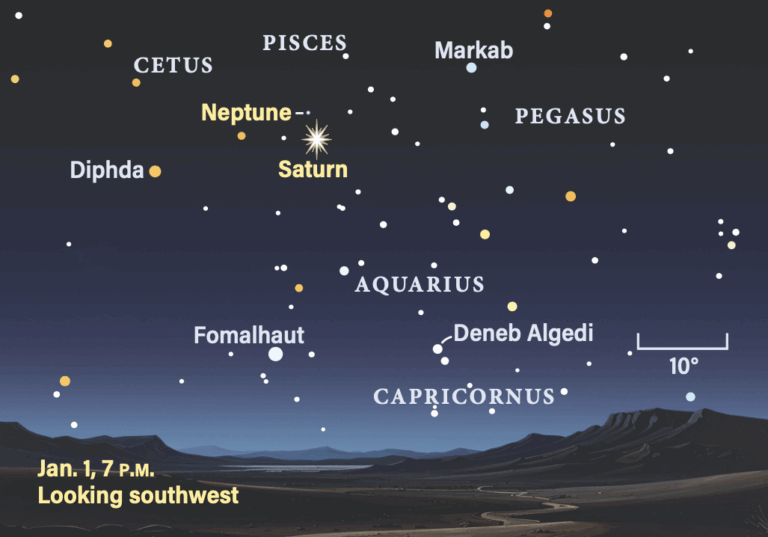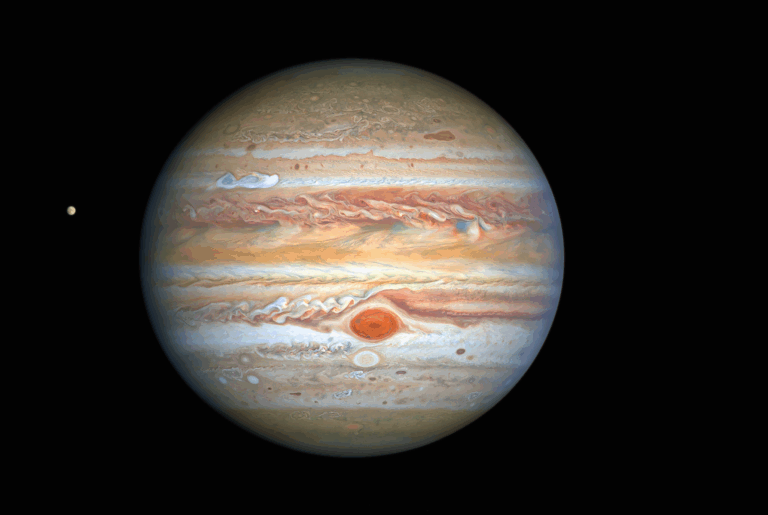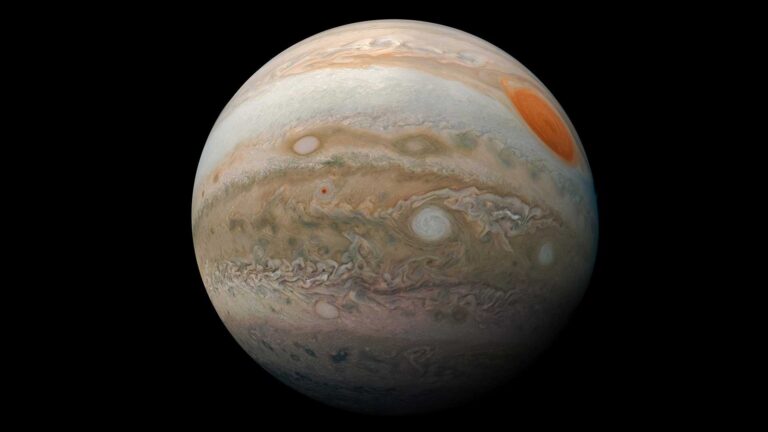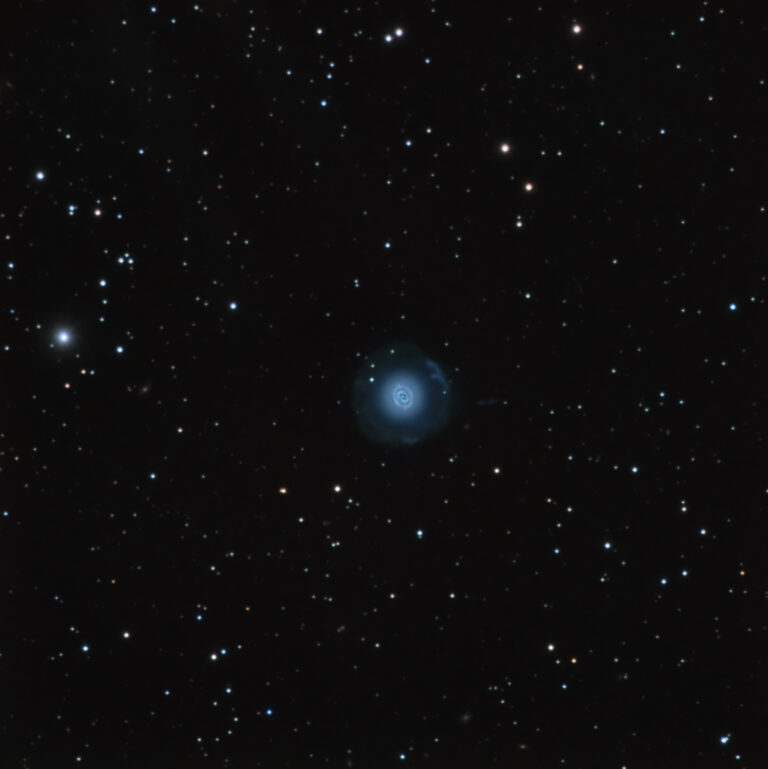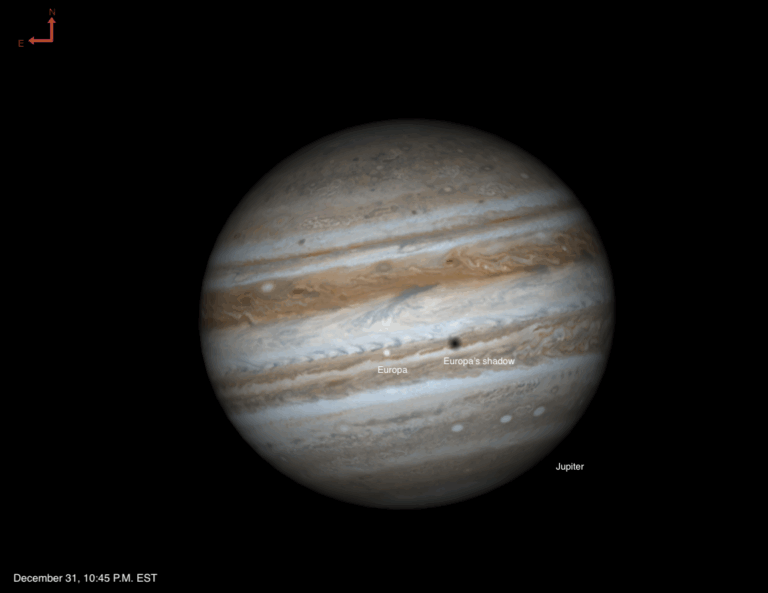Key Takeaways:
Friday, October 6
The second-brightest asteroid of 2017 puts on a nice show in October’s sky. Minor planet 7 Iris glows at magnitude 7.5, which is bright enough to see through binoculars from the suburbs. It resides in the constellation Aries the Ram, a region that climbs high in the east by late evening. Iris stands 3° due east of Aries’ brightest star, magnitude 2.0 Hamal (Alpha [a] Arietis), this week.
Saturday, October 7
Brilliant Venus rises it the east shortly after 5 a.m. local daylight time, about a half-hour before morning twilight starts to paint the sky. It shines brilliantly at magnitude –3.9 and helps point the way to magnitude 1.8 Mars, which rises 5 minutes earlier. The two planets appear just 1° apart, though the gap will widen as the week progresses. Mars also reaches aphelion today (at 6 p.m. EDT), when the planet’s orbital motion carries it farthest from the Sun. It then lies 154.9 million miles (249.2 million kilometers) from our star.
Sunday, October 8
Although Neptune reached opposition and peak visibility a month ago, it remains a worthwhile subject. The outermost major planet appears one-third of the way to the zenith in the southeastern sky after darkness falls and climbs highest in the south around 11 p.m. local daylight time. Neptune glows at magnitude 7.8, which is bright enough to spot through binoculars if you know where to look. The trick is to find 4th-magnitude Lambda (l) Aquarii, which lies about 10° southeast of Aquarius’ distinctive Water Jar asterism. This week, Neptune appears 0.6° southeast of the star. When viewed through a telescope, the planet shows a blue-gray disk measuring 2.3″ across.
Mercury passes behind the Sun from Earth’s perspective at 5 p.m. EDT. This means the innermost planet remains hidden in our star’s glare. It will return to view in the evening sky at the end of October.
Monday, October 9
Venus crosses the invisible border separating the constellations Leo the Lion and Virgo the Maiden today. The border crossing sets up a series of nice conjunctions between the bright planet and Virgo’s stars in the coming weeks.
The Moon reaches perigee, the closest point in its orbit around Earth, at 1:55 a.m. EDT. It then lies 227,953 miles (366,855 kilometers) from Earth’s center.
Tuesday, October 10
Although autumn began a few weeks ago and the stars of winter’s Orion now rule the morning sky, the Summer Triangle remains prominent on October evenings. Look high in the west after darkness falls and your eyes will fall on the brilliant star Vega in the constellation Lyra the Harp. At magnitude 0.0, Vega is the brightest member of the Triangle. The second-brightest star, magnitude 0.8 Altair in Aquila the Eagle, lies some 35° southeast of Vega. The asterism’s dimmest member, magnitude 1.3 Deneb in Cygnus the Swan, stands about 25° east-northeast of Vega. For observers at midnorthern latitudes, Deneb passes through the zenith between 8 and 9 p.m. local daylight time, about an hour after the last vestiges of twilight disappear.
Wednesday, October 11
Uranus reaches opposition in just nine days, and it is already a tempting evening target. The ice giant world rises during twilight and climbs 30° above the eastern horizon by 9:30 p.m. local daylight time. The magnitude 5.7 planet lies in Pisces, 1.5° west-northwest of magnitude 4.3 Omicron (o) Piscium. Although Uranus glows brightly enough to see with the naked eye under a dark sky, binoculars make the task much easier. A telescope reveals the planet’s blue-green disk, which spans 3.7″.
Thursday, October 12
Last Quarter Moon occurs at 8:25 a.m. EDT. It rose around 11:30 p.m. local daylight time yesterday evening, which gives North American observers a chance to see it almost precisely half-lit before this morning’s dawn. Earth’s only natural satellite appears among the background stars of southern Gemini.
Mars is hot on the trail of Venus, and crosses the border between Leo and Virgo today. Mars also will have some nice conjunctions with the Maiden’s stars, but they’ll occur at a slower pace thanks to the Red Planet’s more sluggish orbit.
Venus appears 0.8° northeast of the 4th-magnitude star Beta (b) Virginis this morning.
Friday, October 13
The annual Orionid meteor shower is quickly ramping up toward its peak the morning of October 21. You already should be seeing a few shower members in the predawn sky, where the waning crescent Moon doesn’t offer much interference. To tell an Orionid from a sporadic meteor, trace the path of the “shooting star” backward. An Orionid meteor will appear to radiate from the northern part of the constellation Orion the Hunter.
Saturday, October 14
Saturn remains a tempting target in this week’s evening sky. The ringed planet stands nearly 20° above the southwestern horizon as darkness falls. Shining at magnitude 0.5, it appears significantly brighter than any of the background stars in its host constellation, Ophiuchus the Serpent-bearer. Of course, the best views of Saturn come through a telescope, which reveals a 16″-diameter globe surrounded by a spectacular ring system that spans 37″. But more significantly, the rings tilt 27.0° to our line of sight — the maximum angle possible — in mid-October. The rings haven’t appeared this open since 2003 and they won’t approach this tilt again until 2032. The steep angle offers superb views of ring structure.
Sunday, October 15
The variable star Algol in Perseus reaches minimum brightness at 1:25 a.m. EDT tomorrow morning. Observers on the East Coast who start watching around midevening can see the star’s brightness diminish by 70 percent over the course of about five hours. Those in western North America will see Algol brighten noticeably from late evening until dawn starts to light up the sky, when the star stands high in the west. This eclipsing binary system runs through a cycle from minimum (magnitude 3.4) to maximum (magnitude 2.1) and back every 2.87 days.


